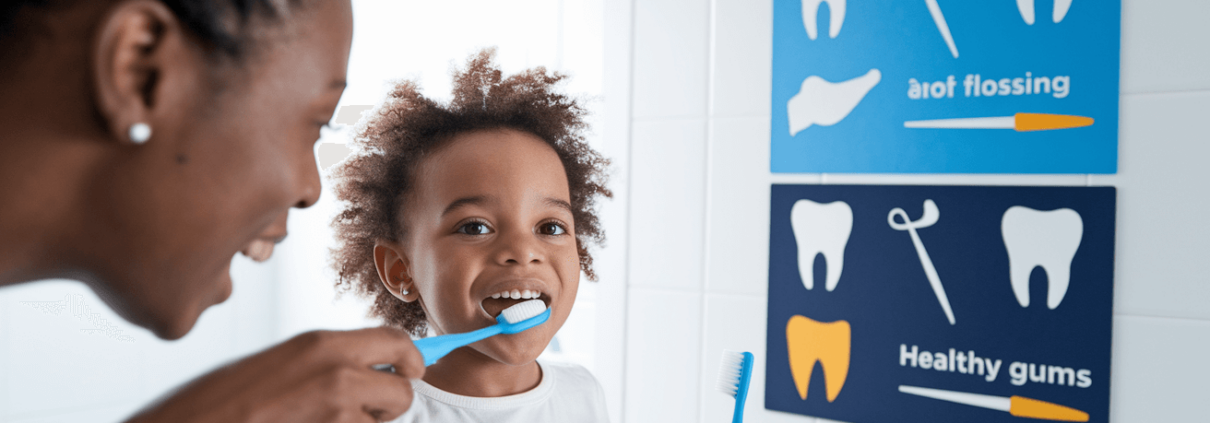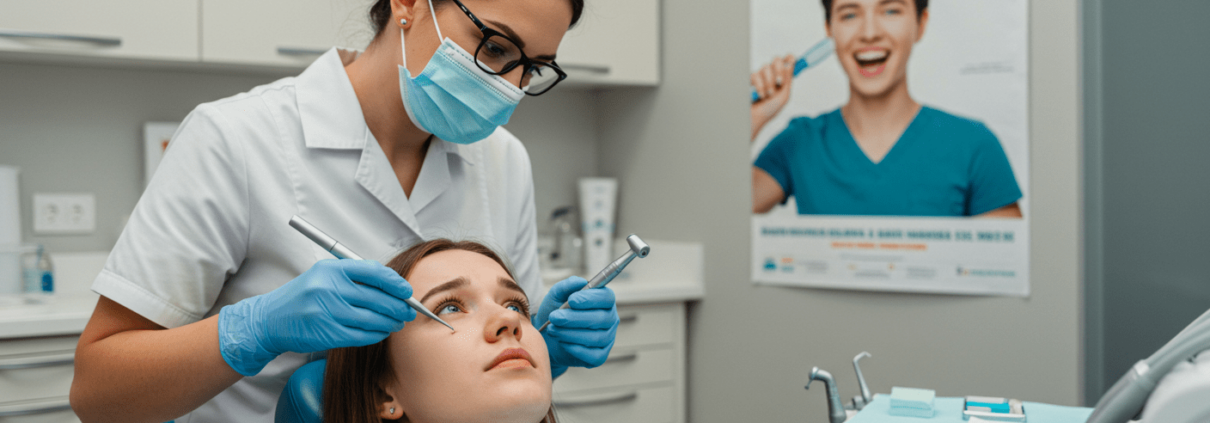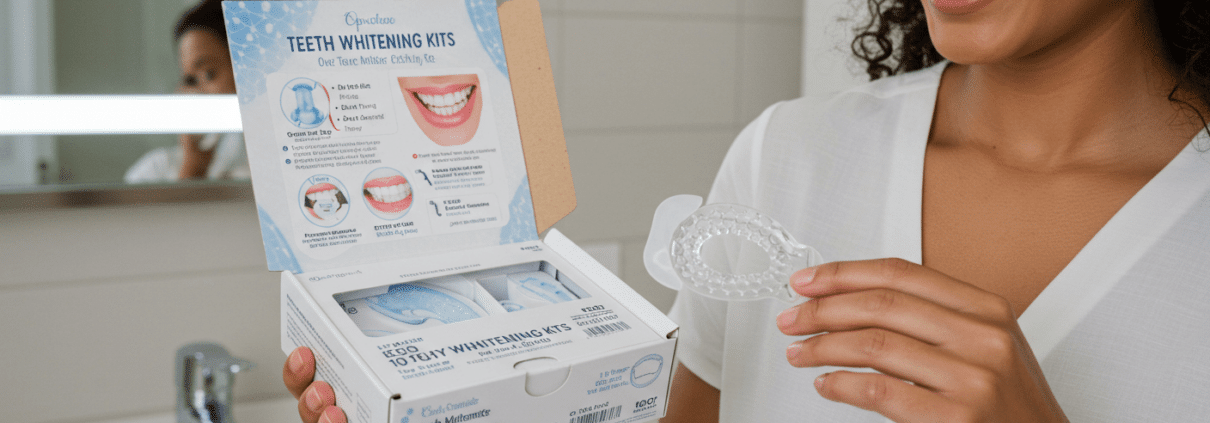Good dental habits don’t grow on trees—they start at home. Teaching your kids how to care for their teeth early sets the tone for a lifetime of healthy smiles. Neglecting these habits? That’s an open invitation to cavities, gum issues, and unnecessary dentist visits (and bills).
So how do you make dental hygiene fun, engaging, and actually stick with your little ones? Let’s dive into 10 powerful kids dental hygiene tips that even the pickiest toddlers can get behind.
TLDR – Quick Guide
- Start early, even before teeth appear.
- Make brushing fun with games and songs.
- Set a two-minute timer—twice a day, every day.
- Don’t forget to floss once teeth touch.
- Lead by example—your habits matter.
- Limit sugary snacks and drinks.
- Teach the importance of regular dental checkups.
- Let kids choose their toothbrush and paste.
- Reward consistency with a simple chart.
- Make dental care a bonding moment.
Detailed Breakdown
1. Start Early—Way Before Teeth Show Up
You don’t need teeth to begin oral care. Wipe your baby’s gums with a soft cloth after feeding. Once teeth arrive, switch to a soft-bristled brush. Early routines build lasting habits (AAPD).
2. Make Brushing a Game
Use songs, apps, or storytelling. Think: “The Plaque Monster is back, and only your superhero brush can defeat it!” It’s not just fun—it’s motivating.
3. Two Minutes, Twice a Day
This isn’t negotiable. Use a timer, sandglass, or a YouTube brushing video. The American Dental Association recommends two minutes of brushing in the morning and before bed (ADA).
4. Introduce Flossing Early
Once your child has two teeth that touch, it’s time to floss. Those tight spaces are prime real estate for cavities. Floss picks can be easier for small hands.
5. Be the Role Model
Kids mimic what they see. Brush and floss alongside them. If they see you slacking, they’ll follow suit.
6. Watch the Sugar
Sticky candies, juices, and sodas wreak havoc. Swap them for water, crunchy fruits, and sugar-free gum (if they’re old enough). The CDC reports that over 52% of kids have had a cavity in their baby teeth (CDC).
7. Normalize Dental Visits
The first dental visit should happen by age 1 or within six months of the first tooth. Make it a positive experience—no threats, no bribes.
8. Let Them Choose Their Tools
Whether it’s a Batman toothbrush or bubblegum-flavored paste, giving your child a say makes them more invested.
9. Use a Reward Chart
Track daily brushing and flossing. Offer non-sugary rewards like extra storytime, stickers, or picking a weekend activity.
10. Make It a Bonding Ritual
Talk about the day while brushing. Laugh over foam-filled grins. Create an emotional connection to oral care—not just a chore.
Key Takeaways
- Start dental hygiene habits from infancy.
- Use engaging methods to make brushing fun and effective.
- Flossing is just as critical as brushing.
- Kids follow what they see—be a brushing role model.
- Regular dental visits should be stress-free and start early.
FAQs
1. At what age should my child start brushing their teeth?
You should start brushing as soon as your child’s first tooth appears. Use a rice-sized smear of fluoride toothpaste until age 3, then a pea-sized amount after that.
2. How do I know if my child is brushing correctly?
Supervise their brushing until at least age 7. Make sure they cover all surfaces and brush for a full two minutes.
3. Is fluoride safe for kids?
Yes, in the right amount. Fluoride strengthens enamel and prevents cavities. Just ensure they use the appropriate toothpaste quantity for their age to avoid overexposure.
4. How often should kids visit the dentist?
Every six months, unless advised otherwise. Regular visits help catch issues early and get kids comfortable with dental care.
5. What if my child refuses to brush?
Make it playful, not punitive. Try letting them brush your teeth, or use a brushing app with animations. Consistency and creativity go a long way.
Does the thought of sitting in a dentist’s chair make your heart race? You’re not alone. Up to 36% of people experience dental anxiety, and nearly 12% have an extreme fear of the dentist (source). But avoiding dental care can lead to serious health issues, more pain, and even higher costs in the long run.
Understanding the psychology of dental fear can help you take control of your anxiety and turn dental visits into a stress-free experience. Whether your fear stems from past trauma, pain, loss of control, or the unknown, there are practical ways to manage and overcome it.
Let’s break down why dental fear exists and explore effective strategies to help you feel calm and confident at the dentist.
TL;DR – Quick Guide
- Dental fear is common and often linked to past trauma, pain, or a fear of losing control.
- Avoiding the dentist leads to worse problems (pain, infections, costly treatments).
- Techniques like deep breathing, sedation, and gradual exposure can help ease anxiety.
- Modern dentistry is more comfortable—pain-free treatments are available!
- Communicating with your dentist is key to feeling safe and in control.
What Causes Dental Fear?
1. Past Negative Experiences
A traumatic dental visit in childhood (or even as an adult) can create lasting anxiety. Painful procedures, rough dentists, or feeling unheard can make future visits stressful.
2. Fear of Pain
Let’s be honest—no one likes pain. Even though modern dentistry is far less painful than in the past, the fear of discomfort keeps many people from seeking care.
3. Loss of Control & Vulnerability
Lying back in a chair with your mouth open while someone works on your teeth can feel uncomfortable and powerless. This lack of control can heighten anxiety.
4. Sensory Overload
The sounds of drills, bright lights, and unfamiliar smells can trigger stress and discomfort for many patients. Those with sensory sensitivities may find it overwhelming.
5. Fear of Judgment
Many people avoid the dentist due to embarrassment about their teeth. Worrying about being judged for poor oral health can intensify anxiety.
How to Overcome Dental Anxiety
1. Choose the Right Dentist
Finding a compassionate, patient-friendly dentist makes all the difference. Look for:
- A dentist who specializes in treating anxious patients.
- Offices that offer calming environments (soft lighting, music, or aromatherapy).
- A dental team that takes time to explain procedures and listen to your concerns.
2. Communicate Your Fears
You’re not alone—dentists are trained to help anxious patients. Let them know about your fears so they can:
✅ Explain each step to reduce uncertainty.
✅ Use gentle techniques and go at your pace.
✅ Offer breaks during the appointment.
3. Try Relaxation Techniques
Before and during your visit, try:
🧘 Deep Breathing: Inhale for four seconds, hold for four, exhale for four. Repeat.
🎧 Distraction: Listen to calming music or a podcast during your appointment.
👐 Progressive Muscle Relaxation: Tense and relax different muscle groups to reduce stress.
4. Consider Sedation Options
For severe anxiety, sedation dentistry can help. Options include:
- Nitrous oxide (laughing gas) – Keeps you relaxed but fully conscious.
- Oral sedation (anti-anxiety medication) – Helps calm nerves before your visit.
- IV sedation or general anesthesia – For extreme fear or lengthy procedures.
5. Start Small & Build Confidence
If fear keeps you from the dentist, ease into it with small steps:
- Book a consultation—just talk to the dentist, no treatment needed.
- Schedule a basic cleaning before committing to major work.
- Bring a friend or family member for support.
Each positive experience helps retrain your brain to feel safe at the dentist.
The Role of Modern Dentistry in Reducing Anxiety
Dentistry has come a long way! Many pain-free and minimally invasive treatments are now available, including:
✔ Laser dentistry – Reduces the need for drills and numbing injections.
✔ Needle-free anesthesia – New methods like numbing gels and sprays make injections painless.
✔ Quieter, more comfortable tools – No more scary, loud drills!
✔ Faster treatments – Advanced technology makes procedures quicker and easier.
If it’s been years since your last visit, you might be surprised at how much has changed!
Key Takeaways
✔ Dental fear is common but manageable with the right strategies.
✔ Communication is key—let your dentist know your concerns.
✔ Relaxation techniques & sedation options can ease anxiety.
✔ Modern dentistry is far less painful than most people expect.
✔ Taking small steps builds confidence and makes future visits easier.
Facing your fears starts with one step—booking that appointment!
FAQs
1. How do I tell my dentist I have dental anxiety?
Be honest! Simply say, “I have dental anxiety”, and your dentist will adjust their approach to help you feel comfortable. Many dental offices specialize in treating anxious patients.
2. Can I be put to sleep for dental procedures?
Yes! IV sedation or general anesthesia is available for severe dental phobia or complex procedures. However, many patients find that oral sedation or nitrous oxide is enough to relax them.
3. What if I haven’t been to the dentist in years?
Don’t worry! Dentists are there to help, not judge. Many people avoid dental care due to fear, but starting now can prevent future problems. Find a dentist who specializes in gentle care.
4. How can I make my child less afraid of the dentist?
Start young! Read books about the dentist, play “pretend dentist” at home, and choose a kid-friendly dentist. Keeping a positive, upbeat attitude also helps kids feel safe.
5. Is dental anxiety genetic?
There’s evidence that fear of the dentist can be learned from parents or family members. However, positive experiences and gentle care can help overcome inherited anxiety.
Everyone wants a brighter, whiter smile, and over-the-counter (OTC) teeth whitening kits seem like a quick and affordable solution. Walk into any pharmacy, and you’ll find a variety of strips, gels, pens, and LED kits promising dramatic results in just days.
But here’s the problem—many of these products come with hidden dangers that can permanently damage your teeth and gums. From enamel erosion to chemical burns, using OTC whitening products without professional guidance can do more harm than good.
Before you reach for that whitening kit, let’s explore the hidden dangers of over-the-counter teeth whitening kits, why they can be risky, and what safer alternatives exist for achieving a radiant smile.
TL;DR – Quick Guide
- Main Risk: Overuse or misuse can lead to enamel erosion, gum irritation, and tooth sensitivity.
- Why It Happens: Many kits contain high levels of peroxide or acidic ingredients that damage teeth.
- Common Side Effects: Chemical burns, uneven whitening, and increased cavity risk.
- Are OTC Kits Safe? Some are, but improper use and poor-quality ingredients make them risky.
- Better Alternatives: Professional whitening treatments and dentist-approved at-home options are safer and more effective.
The Hidden Dangers of Over-the-Counter Teeth Whitening Kits
1. Enamel Erosion & Permanent Tooth Damage
Many OTC whitening kits contain high concentrations of hydrogen peroxide or carbamide peroxide. While these chemicals remove stains, they can also weaken your enamel, leading to:
- Permanent enamel loss
- Increased risk of cavities
- Weakened teeth that are more prone to cracks and chips
Unlike hair or skin, tooth enamel doesn’t regenerate, meaning damage is irreversible.
2. Extreme Tooth Sensitivity
If you’ve ever experienced a sharp pain when eating or drinking something cold, you know how frustrating tooth sensitivity can be. Overuse of whitening kits can:
- Expose dentin (the sensitive layer beneath enamel)
- Cause lingering pain, even when not eating or drinking
- Make teeth more vulnerable to temperature changes
Some people find their teeth permanently more sensitive after repeated whitening treatments.
3. Chemical Burns & Gum Irritation
Whitening gels can accidentally leak onto the gums, leading to:
🚨 Chemical burns (painful white patches on the gums)
🚨 Inflamed, bleeding gums
🚨 Long-term gum recession
Gum irritation can become permanent, exposing tooth roots and increasing sensitivity.
4. Uneven Whitening & “Chalky” Teeth
Many OTC whitening kits don’t distribute the whitening agent evenly, leading to:
❌ Blotchy or streaky results
❌ Teeth appearing “chalky” or dehydrated
❌ Inconsistent whitening due to deep stains that OTC products can’t remove
5. Increased Risk of Cavities & Decay
Enamel erosion from excessive whitening makes teeth more prone to cavities. The peroxide in whitening kits can also disrupt oral bacteria balance, leading to:
🦠 Higher plaque buildup
🦠 Increased risk of tooth decay
🦠 Weak spots on teeth that may require fillings
Are Over-the-Counter Whitening Kits Ever Safe?
✅ Yes, but with caution. Some OTC kits are dentist-approved and contain safe levels of whitening agents. However, misuse and poor product quality can still cause problems.
🔹 Safer OTC Whitening Options:
- Whitening toothpaste with fluoride (low risk of damage)
- Custom trays made by a dentist (ensures even application)
- Whitening strips with low peroxide levels (follow usage instructions carefully)
Safer Alternatives to OTC Whitening Kits
1. Professional In-Office Whitening
Done by a dentist, this method uses controlled peroxide levels and UV light to safely whiten teeth without damaging enamel.
🔹 Benefits:
- Immediate, long-lasting results
- Custom application to prevent gum irritation
- Monitored for safety and effectiveness
2. Dentist-Prescribed At-Home Whitening Trays
Dentists can provide custom whitening trays with safe peroxide concentrations, ensuring even application without damaging gums.
🔹 Why It’s Better:
✅ Safer for enamel and gums
✅ Lower risk of uneven whitening
✅ Longer-lasting, professional results
3. Natural Whitening Methods (With Caution)
Some natural remedies can help remove stains without harsh chemicals:
- Oil pulling with coconut oil (reduces plaque buildup)
- Baking soda toothpaste (mildly abrasive but should be used sparingly)
- Hydrogen peroxide mouth rinse (diluted) (use only occasionally)
🚨 Avoid DIY “whitening hacks” like lemon juice or activated charcoal—these can destroy enamel!
When to See a Dentist About Teeth Whitening
🔹 If your teeth feel sensitive, painful, or weak after using a whitening kit.
🔹 If you notice white spots, streaky whitening, or uneven results.
🔹 If your gums become inflamed, irritated, or develop sores.
🔹 If you want a safer, long-term whitening solution without risking enamel damage.
Key Takeaways
🚨 Over-the-counter teeth whitening kits can be dangerous if misused.
❌ Risks include enamel erosion, gum irritation, chemical burns, and sensitivity.
🦷 Safer alternatives include professional whitening, dentist-approved trays, and mild whitening toothpaste.
💡 If you experience pain, uneven whitening, or gum damage, see a dentist immediately.
A white smile is great—but not at the cost of damaging your teeth permanently. Choose safe, professional whitening options for long-lasting, healthy results!
FAQs
1. How often can I use OTC whitening kits safely?
Most kits recommend no more than once every 6 months. Using them too frequently weakens enamel and increases sensitivity.
2. Can teeth whitening kits remove deep stains?
OTC kits can only remove surface stains. Deep stains from smoking, coffee, or medications require professional treatments.
3. Do LED whitening kits work better than strips or gels?
Many OTC LED kits don’t actually speed up whitening. Professional LED treatments are more effective because they use higher-quality peroxide formulas.
4. Can teeth whitening cause permanent sensitivity?
Yes, if enamel is worn down too much, sensitivity can become permanent. This is why overusing OTC kits is dangerous.
5. What’s the safest way to whiten teeth?
A dentist-supervised whitening plan is the safest option. Professional treatments or custom trays offer the best results without damaging enamel.



